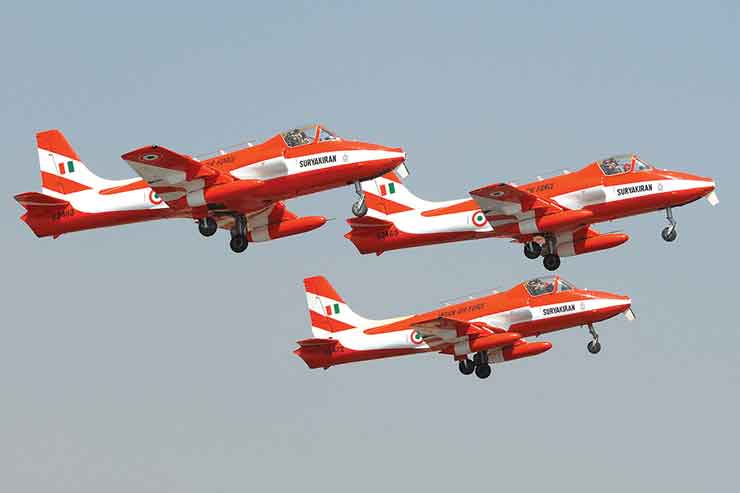
IN 1948, India tasked its nascent aircraft industry – in the form of Hindustan Aeronautics Limited (HAL) – to work on a basic piston-engine trainer to supplement and then supplant the Tiger Moths and Percival Prentice aircraft then in service. The result was the Hindustan HT-2 which served with distinction from 1953 until its retirement in 1990. Over 170 were built, with a dozen being used to form the Ghanaian Air Force in 1959.
By starting with a basic trainer, the HAL had embarked upon its learning process in a sensible manner and intended to develop this core competency into an advanced trainer – the HT-11 – and an armed trainer – the HT-10 – which would have replaced the T-6 Harvard in the training roles. However, even at this early stage, short-sightedness combined with budgetary constraints conspired to stymie these plans. Aircraft could not progress beyond the mock-up stage and a valuable learning process ended prematurely.
The first jet combat aircraft to be manufactured in India was the De Havilland Vampire in its FB.52 and T.55 variants. Under a license granted in 1950, which included the Goblin 2 turbojet, India was able to replace its piston-engine fighters with jet aircraft in a systematic and low-risk manner while simultaneously building its aviation industry.
The years 1956 to 1959 were critical ones for the Indian aviation industry. In 1959, the HAL received permission to proceed with the development of a basic jet trainer to replace the Vampire T.55s and the T-6 Harvard. In one of HAL’s nearly unqualified successes, the resultant aircraft – the HJT-16 Kiran – first flew in 1964 and in a modified version continues to this day as the IAF’s basic trainer.
Simultaneously, the HAL had laid the foundations for fighter production with a license agreement for the Folland Gnat being signed in 1956 and Dr Kurt Tank was engaged to begin work on designing the HF-24 Marut.
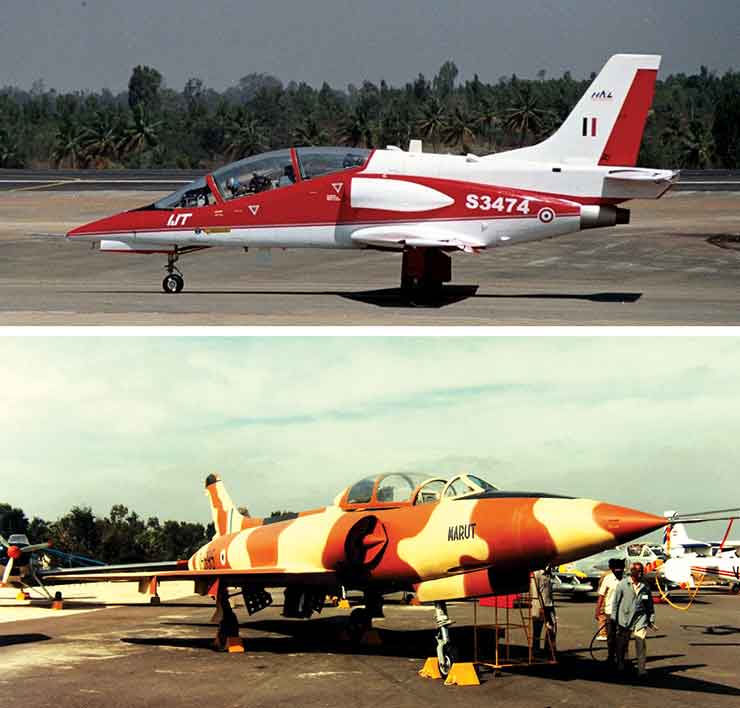
The Gnat, despite its British origin, became an Indian fighter. At its peak, the HAL could build four Gnats per month and this diminutive fighter transformed the Indian Air Force’s (IAF’s) combat arm completely. The HAL also received a license to produce the Bristol Orpheus engine.
The HAL Ajeet, while intended to improve on the Gnat’s performance, was only marginally successful as by 1975, the desired performance could only be achieved with a more powerful engine and more advanced avionics. While four squadrons of Ajeets served between 1975 and 1991, the type never achieved its potential.
It should be noted here that while underpowered, the Marut was an excellent weapons platform and though somewhat short on range, its performance characteristics – even with the Mk.703 were not dissimilar to contemporary types like the French Dassault Etendard IVM (which served until 1987) or even the Dassault Super Mystere B.2 (which continued in service until 1996 with Honduras). In contrast, the last Maruts left squadron service in 1985.
Despite some half-hearted efforts to find a suitable engine for the Marut, the IAF was never entirely supportive of the project. An attempt to integrate Adour turbofans (used in the Jaguars and Hawks) was confounded by an IAF demand that the thrust of the Adour be increased by 20 per cent.
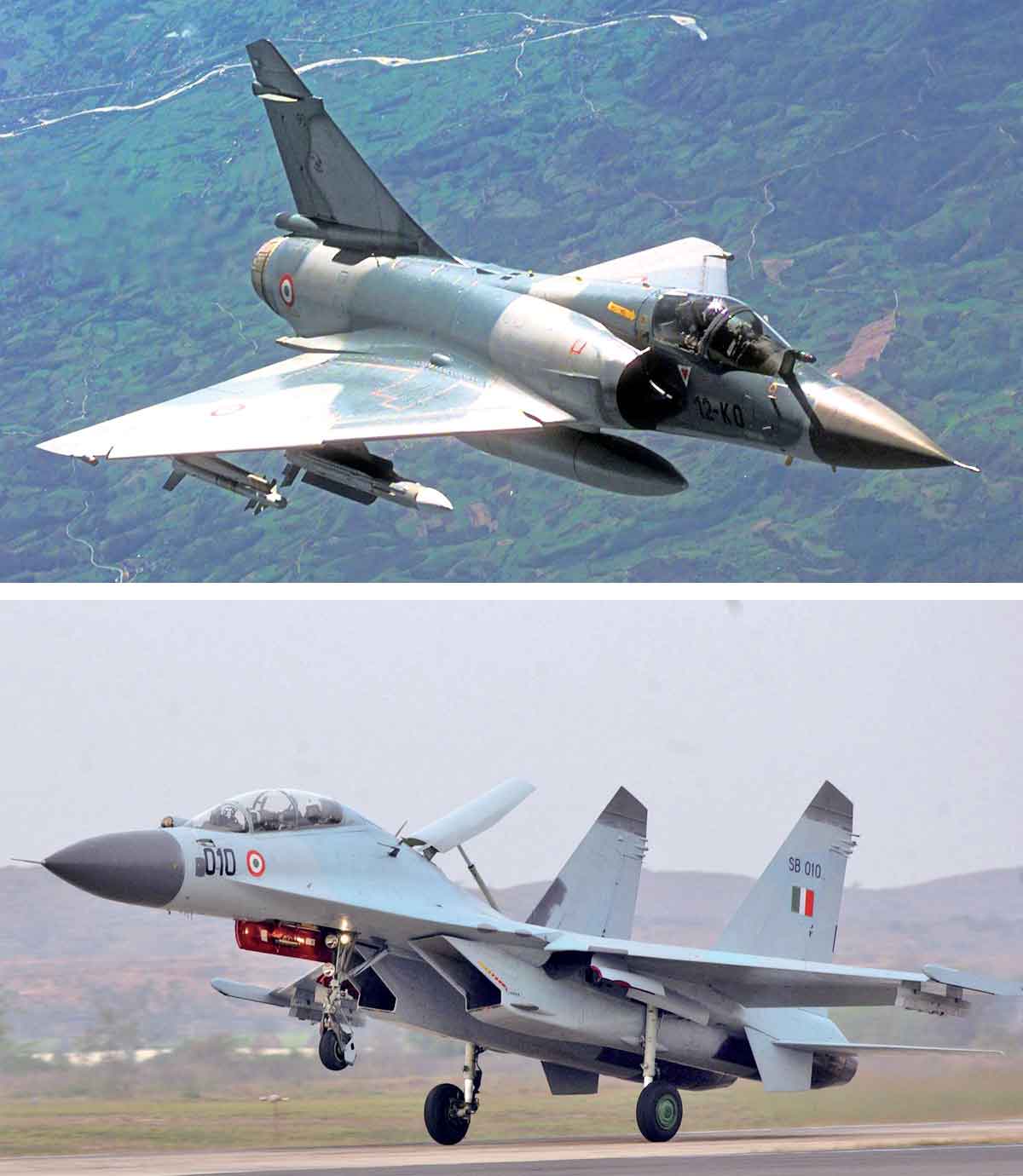
This decidedly caused unhelpful attitude, at least in part, because the IAF’s immediate requirements were being catered for by a substantial infusion of Soviet aircraft – the Su-7 for tactical strike and the MiG-21FL/M and MF variants. A very realistic and cost-effective proposal to create a strike-fighter based around the Marut airframe and the R-25 engine (the HF-25) received no sanction and while efforts to procure RB.199 turbofans were seriously considered for a Marut Mk.3 – the HF-73 – the project failed to materialise.
In a real sense the Marut power plant saga was the beginning of the end for the HAL as designer and developer of aircraft. While license-manufacture of MiGs, Jaguars and Alouette helicopters continued (some projects with greater indigenous content by value than others) to meet the requirements of the IAF, the HAL’s potential was squandered. This was made worse when the development of India’s Light Combat Aircraft (LCA) was given over to the new Aeronautical Development Agency (ADA), robbing the HAL of much of its design capability and creating a schism between the design agency and the production agency.
THE ERA OF LICENSE MANUFACTURE
The HAL has invested enormous efforts into phased indigenisation of license-manufactured products. This has come at a considerable cost, but it has meant that license-production in India is not mere assembly but involves a progressive increase in indigenous content. The HAL has produced hundreds of combat aircraft and helicopters under license.
The HAL produced and produces MiG-21, MiG-27 and Su-30MKi aircraft under license from the USSR/Russia, Jaguars and Hawks from the UK, Dornier Do-228 from Germany and Chetak and Cheetah helicopters from France. The degree of indigenisation achieved is broken down into indigenisation by content and indigenisation by value. By these measures, in the past, India achieved 90 per cent indigenisation by content of the Chetak (72 per cent of its engine), 88 per cent of the Jaguar (84 per cent of its engine) and over 96 per cent of the MiG-21bis engine, again by content.
In more recent times, the HAL has achieved a 75 per cent indigenisation by content of the Su-30MKI (60 per cent by value), 72 per cent indigenisation by content of the BAE Hawk (42 per cent by value) and 73 per cent by content of the Do-228 (40 per cent by value). Contractual decisions as to indigenisation levels by content and value are decided by the priority to be given to the project and the timelines involved.
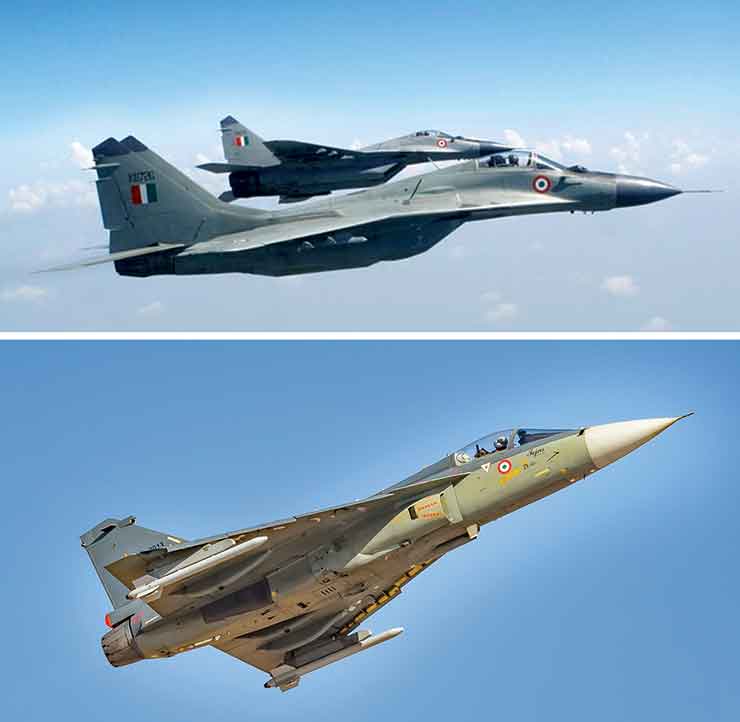
The MiG-21/-27 and Su-30MKI manufacture has resulted in a quantum leap in the manufacturing capability of the HAL. Though Su-30MKIs manufactured in India are more expensive than those manufactured in Russia, HAL’s efforts have made fleet sustainability (now at 68 per cent availability) somewhat easier. This may be further enhanced as spares/LRU are indigenised and stockpiled.
NEW INDIGENOUS DESIGNS COME TO THE FORE
The HAL has two indigenous designs in production – the Light Combat Aircraft Tejas and the Advanced Light Helicopter (ALH) Dhruv. The former is 75 per cent indigenous by content and 60 per cent indigenous by value while the latter is 75 per cent indigenous by content and 52 per cent indigenous by value. While over 150 Dhruv helicopters have been produced to date, plus additional numbers of a weaponised version called the Rudra, only 10 Tejas combat aircraft have entered service with No. 45 squadron of the Indian Air Force.
This slow production rate is causing problems for the IAF as it seeks to rebuild its combat strength around a strong nucleus of modern combat aircraft of which the Tejas is a critical component. On the plus side, the Tejas has been cleared for a wide variety of air-to-ground ordnance while for air defence tasks, it has completed integration and testing with R-73 and Derby air-to-air missiles. These latter two systems have been cleared for use with the in-service IAF aircraft. As many as 40 Tejas Mk1 aircraft are on order with orders for an additional 83 of an improved Mk.1A variant being nearing contract signing.
While the long development period for the Tejas, and to a lesser extent the Dhruv, have attracted much adverse comment, the aircraft are proving to be effective and popular in Indian service as the HAL has improved its product support to the extent of being able to substantially increase availability rates of platforms – 68 per cent in the case of the Su-30 and roughly 70 per cent in the case of the Dhruv. All Tejas aircraft with No.45 squadron are currently operational and available for service.
A new combat helicopter – the Light Combat Helicopter – has begun testing and initial orders for 15 have been placed. In addition, a Light Utility Helicopter (LUH) to replace the Chetak and Cheetah has also flown with orders of over 100 being anticipated. These two helicopters make use of many components from the basic Dhruv variant and can be expected to have much commonality of components.
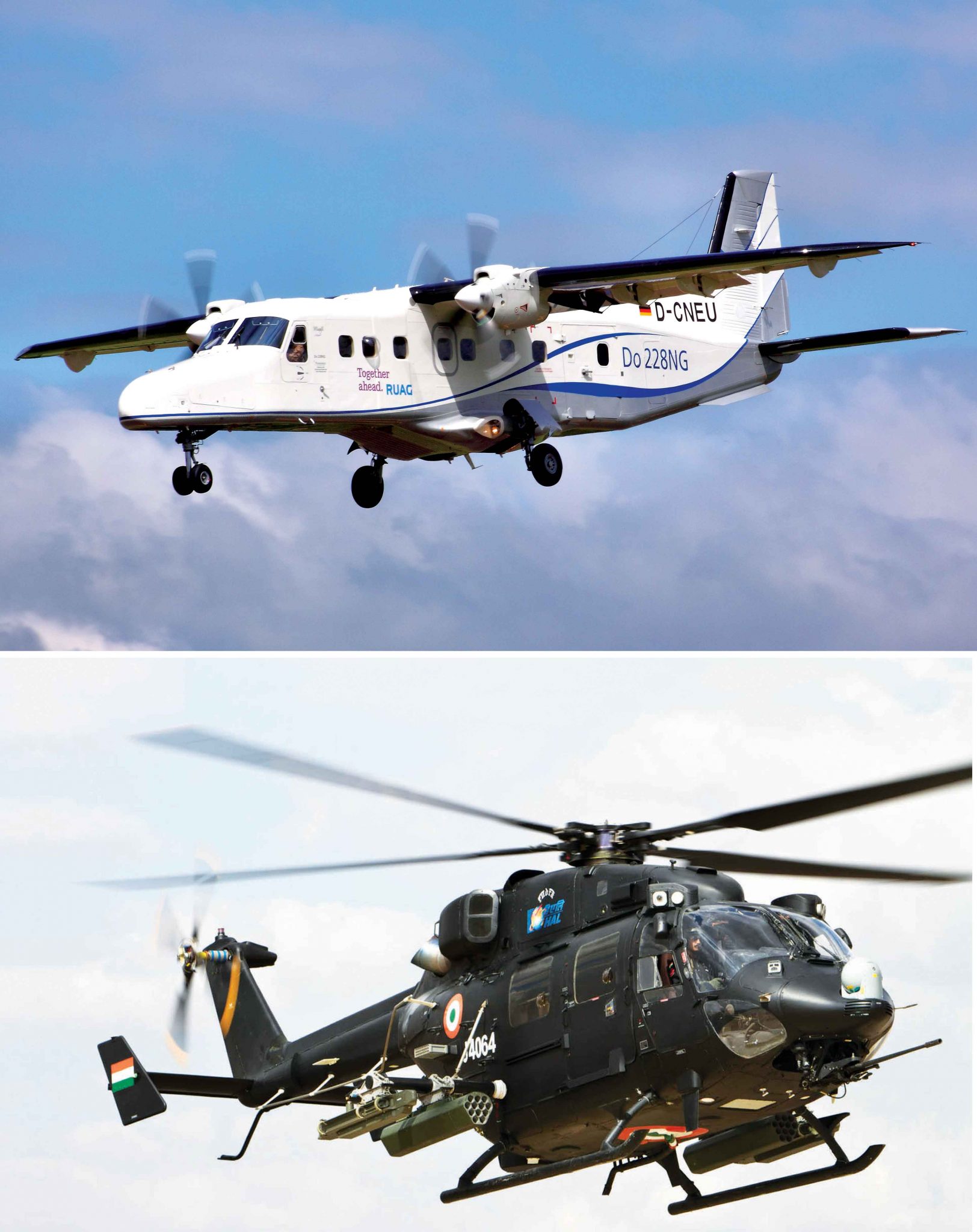
HAL’s efforts to produce training aircraft, however, have not been as successful. A project to produce an Intermediate Jet Trainer (IJT), the HJT-36, started with much promise but spin trials showed significant design defects. With the IAF adopting a two-stage training programme based on the PC-7 and the Hawk, there was no requirement for the HJT-36 and the project, while ostensibly still alive, has virtually ground to a halt. The HTT-40 turboprop trainer is designed to complement the PC-7 in IAF service. Two prototypes are currently flying and it is anticipated that up to 68 could be ordered.
A DEARTH OF ORDERS
HAL’s biggest challenge is not so much in the development of its capabilities but in the lack of orders. The delay in concluding the Tejas Mk1A order and that for an initial 15 Light Combat Helicopters is proving to be problematic. While money outstanding to the HAL for work already done must be paid, the need of the hour is to sign contracts for new products, or perhaps repeat orders for existing ones. This is not an act of charity to the HAL. The Indian Air Force desperately needs additional combat aircraft and such orders – perhaps 40 more Su-30MKI and 20 more Tejas Mk1 – would be a boon for both the IAF and HAL. It would be ridiculous if such low-risk options are ignored while negotiations continue for other orders as both the user and the supplier will suffer in the interim.
CONCLUSION – OPPORTUNITIES LOST BUT STRONG CAPABILITIES BUILT
India’s military aviation industry is a story of lost opportunities. However, it has also been invaluable in building a strong military aircraft manufacturing, repair and overhaul base. In more recent times, it has become capable of undertaking significant upgrades of combat aircraft such as Jaguar, Mirage 2000 and MiG-29. As India gradually increases the production of the Tejas fighter, it is hoped that the HAL proves equal to the challenge to improve its delivery rate of the type.
India’s aircraft design capabilities, on the other hand, are not as extensive as the initial promise portended. Squandered opportunities robbed the country of following an evolutionary path. It is therefore essential that the Tejas continues to evolve even while in service and its design taken to its logical conclusion in its Mk2 version.
–The author is an independent defence analyst and attorney-at-law based in Trinidad Tobago









